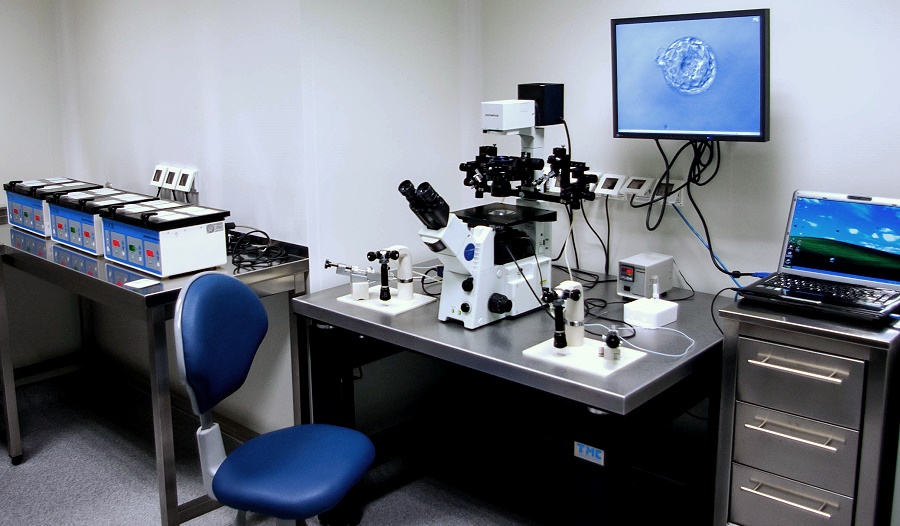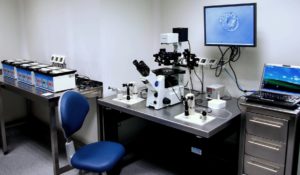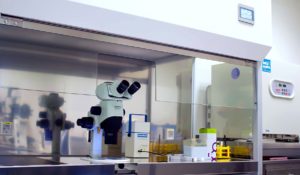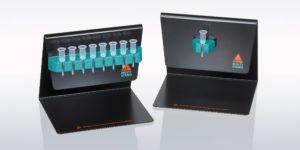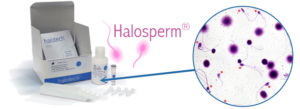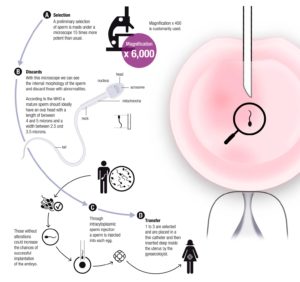Clean Room techology
By equipping a new laboratory, every detail has been carefully selected to increase the chances of pregnancy. The laboratory is located in the middle of the new space, isolated from all other rooms by air lock, the walls are made of antibacterial panels used in clean room technology, and paints and adhesives used in construction were selected to contain minimal amounts toxic substances.
Benefits of Clean Room technology over conventional IVF laboratories
- laboratory premises are heated and the air in them is filtered continuously for 8 weeks (so-called burn out) removing all possible traces of toxic compounds
- Three series of external filters and one internal filter clean the air from dust, smog, spores, bacteria, viruses and organic substances
- Purified air at a pressure of 20 Ps is introduced into the laboratory with 20-30 air changes per hour
- The rooms next to the laboratory have a lower purified air pressure so that air always comes out of the laboratory
With all of these modern techniques we provide the best possible environment for embryo to succeed.
MACS – magnetic cell sorting with annexin V conjugated microbeads
Seed preparation using magnetic cell sorting with early signs of damage
DNA fragmentation is one of the invisible signs of sperm deterioration. Such sperm cannot be distinguished from others until they are stained in a certain way which helps us to diagnose their increased proportion, but after that we cannot use the remaining healthy cells in therapy e.g. by insemination or in IVF procedure.
Benefits of MACS:
- Damaged sperm can be recognised very early and isolated
- This method increases the success of inseminations and the quality of embryos in in vitro fertilization
HBA test and PICSI method
This test determines the maturity of the sperm in the native seed sample (before any treatment separating the sperm with the best characteristics). The test is based on the ability of mature sperm to bind to hyaluronan, a compound found in high concentrations in the follicular fluid in which the egg develops and the cumulus oophorus, a group of cells and intercellular substance that surrounds the egg.
Sperm that bind to hyaluronan:
- such sperm were found to have better morphology and 4-6 times fewer chromosomal aneuploidies
- Higer chances of successful fertilization
- The combination of two methods (MACs and PICSI) gives excellent results.
Vitrification
A method for storing ova and embryos in which the sample is immersed directly in liquid nitrogen at -196 ° C, which leads to the “glazing” of the liquid part of the cells, the so-called vitrification.
The most important advantage of this method:
- ice crystals do not form as in slow freezing, in which water is converted into crystals that can mechanically damage the frozen material
- With the introduction of this method of cryopreservation, the survival of oocytes increased to 90-100%.
Halosperm – DNA fragmentation test
Sperm DNA fragmentation is a natural and normal phenomenon that occurs as a result of programmed sperm death (apoptosis) and if observed in approximately 30% of sperm has no significant effect on male fertility.
Sperm DNA fragmentation is one of the first signs of sperm deterioration and cannot be related to common semen analysis parameters such as sperm number, concentration, and motility.
This test is extremely useful and helps determine the answers to the following questions:
- which pairs are suitable for AIH
- should a modified approach (PICSI, IMSI) be applied to ICSI
- whether varicocele surgery was effective
- how much damage was caused by Chlamydia and Mycoplasma infection
- which is why the failure of MPO procedures is repeated in some couples
IMSI procedure
From the very beginning of the treatment of male infertility by micromanipulation methods, one of the main problems is the choice of sperm.
In order to prevent the selection of sperm potentially unsuitable for fertilization and proper embryonic development, it is necessary to apply the method of MSOME (motile sperm organelle morphology examination), with sperm observed at an increase of 6,000 to 13,000 times.
As it is an unstained preparation, and live and motile sperm, the application of this method in the clinic has led to the development of a modified variant of ICSI called IMSI (intracytoplasmic morphologically selected sperm injection) by which we select morphologically best sperm.
The combination of PICSI and IMSI methods gives the best results in cases of marital infertility caused by the male factor.
